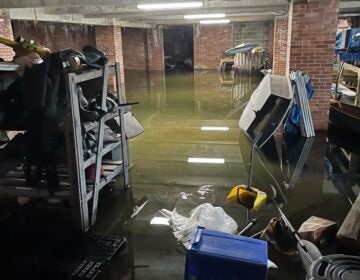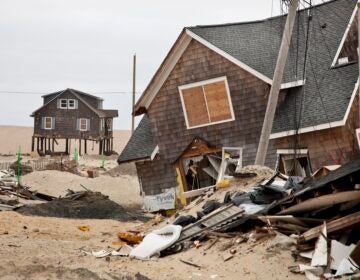Extreme rain and rising tides threaten Philly’s Revolutionary War-era Fort Mifflin
Fort Mifflin sits right along the Delaware River. It’s one of many historic sites across the country at risk from climate change.
Listen 5:44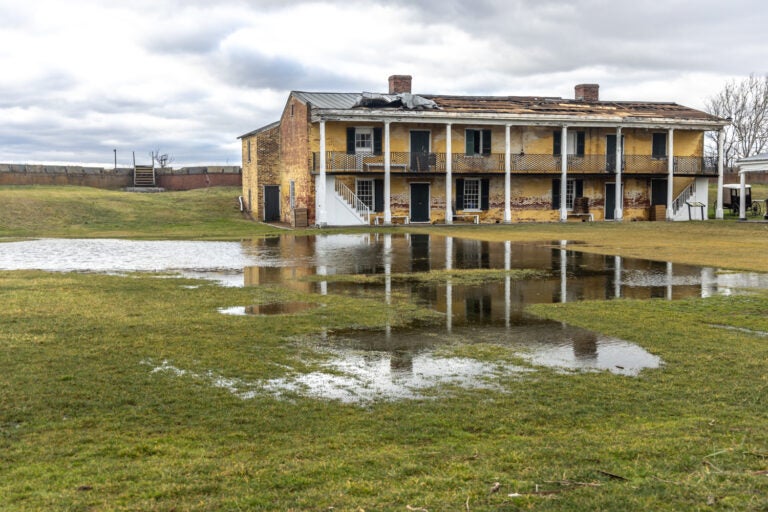
Rain water puddled inside Fort Mifflin on Jan. 29, 2024. The roof of the historical officers quarters building was damaged during from wind during a storm on Jan. 10, 2024. (Kimberly Paynter/WHYY)
Have a question about Philly’s neighborhoods or the systems that shape them? PlanPhilly reporters want to hear from you! Ask us a question or send us a story idea you think we should cover.
Almost 250 years ago, in the fall of 1777, British troops began their occupation of Philadelphia. Soldiers under Gen. George Washington’s command fled to Valley Forge, where they endured a brutal winter.
It’s a familiar story. Less well known is the role played by hundreds of American soldiers who defended Fort Mifflin, a military installation on the Delaware River now caught between rising tides on one side and the busy runways of the Philadelphia International Airport on the other.
Like the Liberty Bell, the Betsy Ross House and Independence Hall, Fort Mifflin played a pivotal role in our nation’s founding. But climate change now threatens its survival.
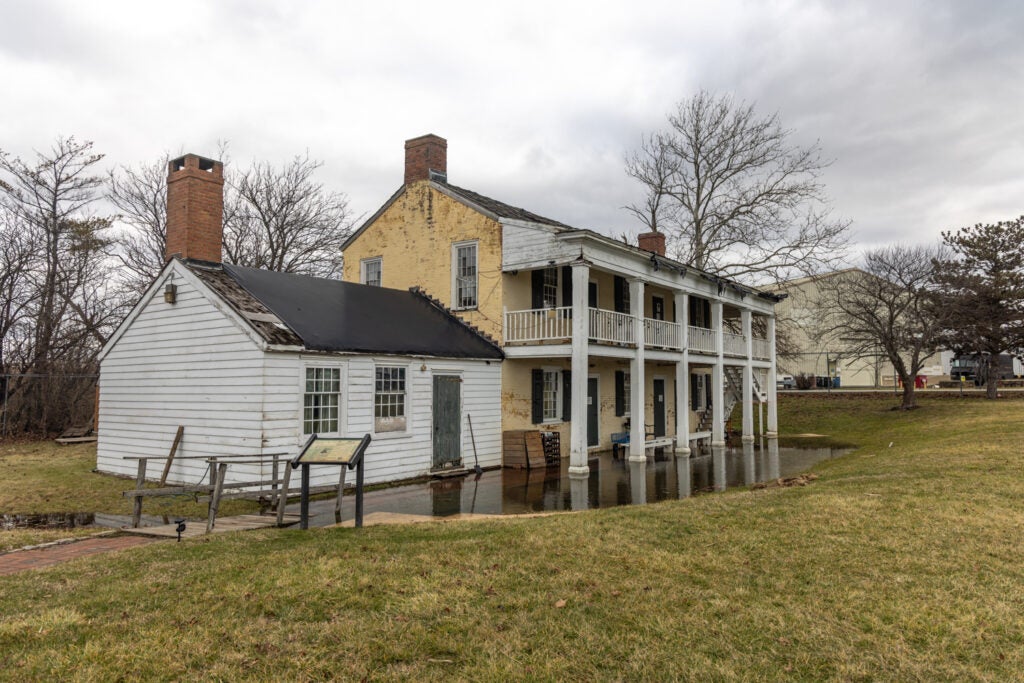
“Fort Mifflin was instrumental in forcing the war to go on and allowing Washington the time that he needed to achieve his victory,” said Fort Mifflin executive director Beth Beatty.
In the fall of 1777, soldiers at the fort helped delay British supply ships from getting North to the capital city. While about 250 American soldiers died or were wounded, they held the fort long enough to allow Washington and his troops to arrive at Valley Forge, where they trained and recouped for the battles ahead.
Now, Fort Mifflin is fighting a battle of its own.
Sea level rise has impacted the tidal Delaware River, causing it to rise more than a foot since 1900. On top of that, extreme rain in the region is becoming more common. Fort Mifflin, like Baltimore’s Fort McHenry, Fort Delaware on Pea Patch Island in the middle of the Delaware River, and even colonial Jamestown, is at risk of being swamped by the tides.
An early winter storm breaches the sea wall and tears off a roof
In January, an intense rain storm, high tide, and extreme winds pushed water over the sea wall surrounding Fort Mifflin. The river reached its highest level yet since records began in the late 1980s.
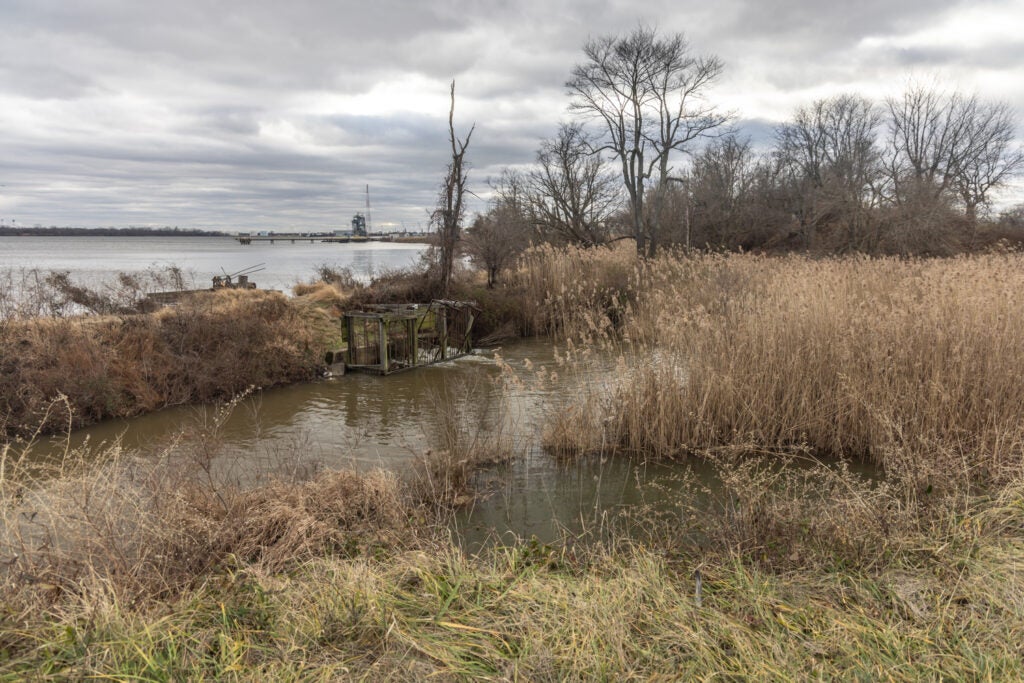
The wind peeled part of a reproduction metal roof off Fort Mifflin’s officers’ quarters. The grassy area inside the fort flooded — along with a renovated historic hospital building on the grounds.
“The problem was in our back room, which is storage,” Beatty said. “Including fabric storage, cast iron, storage of historic clothing — reproduction for our staff to wear. A lot of things [had] to be sent out to be cleaned.”

Beatty’s nonprofit, which stewards the city-owned site, raised several thousand dollars in donations after the storm. She expects the cost to permanently repair the roof to be over $100,000 — something the nonprofit will need to apply for new grants to cover.
Back when the fort was built, the area was called “mud island,” so it’s no stranger to water.
But since then, high tide or sunny-day flooding, where infrastructure floods even when there is no rain, has also gotten more frequent — and is projected to occur along the Delaware River in Philadelphia several dozen days per year by 2050.
Beatty worries that over time, the wet ground will compromise the foundations of the old buildings.
“The high watermark’s 1933 — that hasn’t happened since then. But what is happening is more frequent but less catastrophic things,” Beatty said. “It’s like being pecked to death by a chicken. It happens in little bits over and over and over again.”
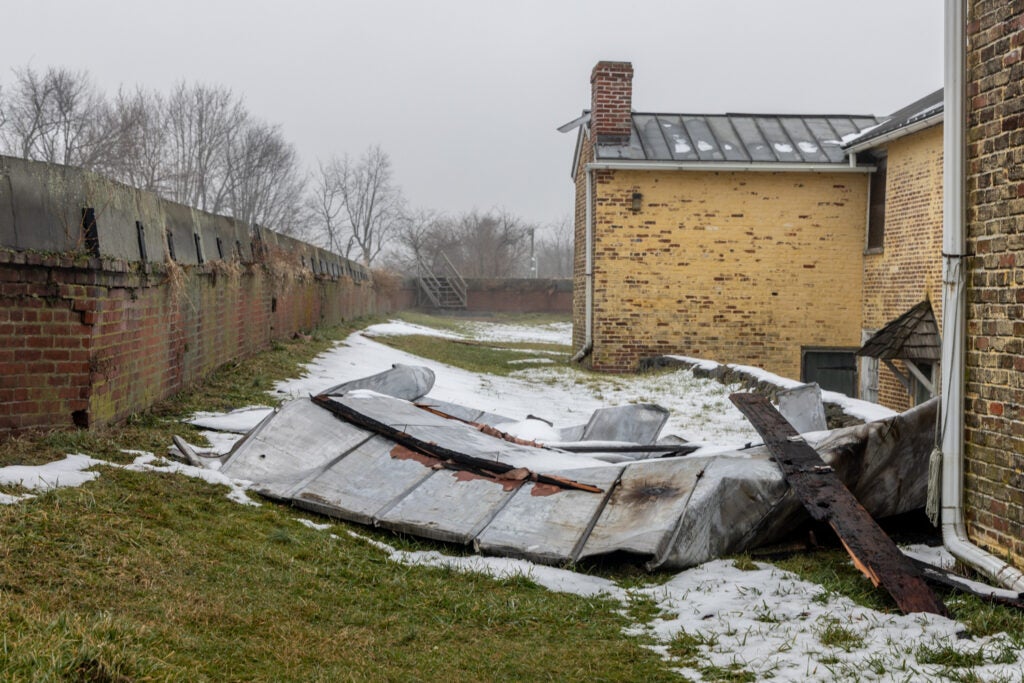
As early as 2070, sea level rise could cause the river to inundate the fort permanently under a high sea level rise scenario, according to projections from the National Oceanic and Atmospheric Administration.
“Not to be overly dramatic, but I think the water situation is the single greatest threat to the existence of Fort Mifflin and any historic site that sits in a complex location like this,” Beatty said.
Historic preservation advocates recognize that climate-linked disasters are a growing threat to historic sites across the country.
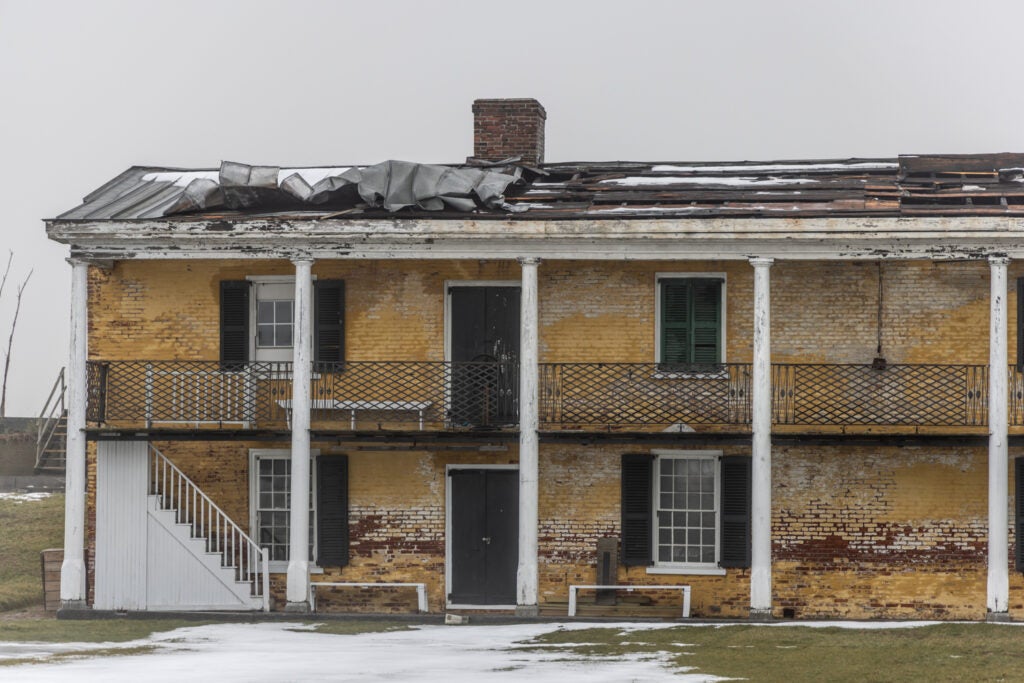
“This is an issue that is increasingly apparent,” said Jim Lindberg, senior policy director with the National Trust for Historic Preservation. The organization publishes a list each year of the most endangered historic places.
Lindberg said Fort Mifflin is a good example of the situation that many historic military structures along coasts and waterways now face.
“While they often have survived remarkably through the decades and centuries, I think now they’re facing even greater challenges,” Lindberg said. “It’s not easy to protect these places because they are in some cases literally with their feet in the water.”
Hundreds of historic sites in Philly at risk of flooding
While Fort Mifflin’s location threatens its very existence, hundreds of other historic sites face increased flood damage due to climate change. In 2016, the state of Pennsylvania surveyed historic buildings and found more than 500 designated historic properties in Philly in flood zones or areas that could be swamped by storm surge during a hurricane or by rising sea levels.
These include Amtrak’s 30th Street Station, Old Swedes’ church and burial ground in South Philadelphia, many of Manayunk’s old textile mills, the Fairmount Water Works, and buildings along Boathouse Row.
The goal of the project, funded with Hurricane Sandy recovery money, was to incorporate considerations for historic resources into the city’s Hazard Mitigation Plan for the first time.
“We argued that effective hazard mitigation planning should look at protecting life and property, but also the sense of place in our communities — and that means protecting our historic and cultural resources as well,” said Jeremy Young, who led the project at the time through the State Historic Preservation Office and now works with an economic development nonprofit in Lancaster.
Following the survey, the city and state commissioned a flood mitigation guide for the Manayunk Main Street historic district, which describes ways to retrofit properties to reduce damage from future floods.
After the remnants of Hurricane Ida walloped Manayunk’s Main Street in 2021, the owner of one historic textile mill adapted by installing flood vents, elevating electrical equipment, replacing drywall with concrete and stucco, and using the building to house pop-up events — like a flood-themed haunted house — rather than a permanent business.

Digging in, or ‘pulling back’
Jim Lindberg, with the National Trust for Historic Preservation, hopes the impact of climate change on historic sites could motivate more people to take action.
“The threats to historic sites can really call attention to the urgency of dealing with this,” Lindberg said. “Trying to not only adapt to these climate change impacts and make our sites more resilient, but also … reducing carbon emissions.”
But in some places, adapting may mean letting the water win, he said.

“It may mean pulling back, letting certain things go,” Lindberg said. “This is going to have to be part of the conversation — and that’s one that every community, every site needs to make very thoughtfully.”
At Fort Mifflin, site director Beth Beatty doesn’t want to let go.
She hopes to modernize the century-old tide gate in the moat, and look into other solutions. She expects it to be expensive for the small nonprofit she runs — but thinks the site’s future depends on adapting to climate change.

“It’s not the kind of thing where we can just ignore it and hope it goes away — because it’s not,” Beatty said.
She sees Fort Mifflin’s role in helping Americans win the War of Independence as a “monument to perseverance and ingenuity” — and wants to keep that history alive.

Subscribe to PlanPhilly
WHYY is your source for fact-based, in-depth journalism and information. As a nonprofit organization, we rely on financial support from readers like you. Please give today.








